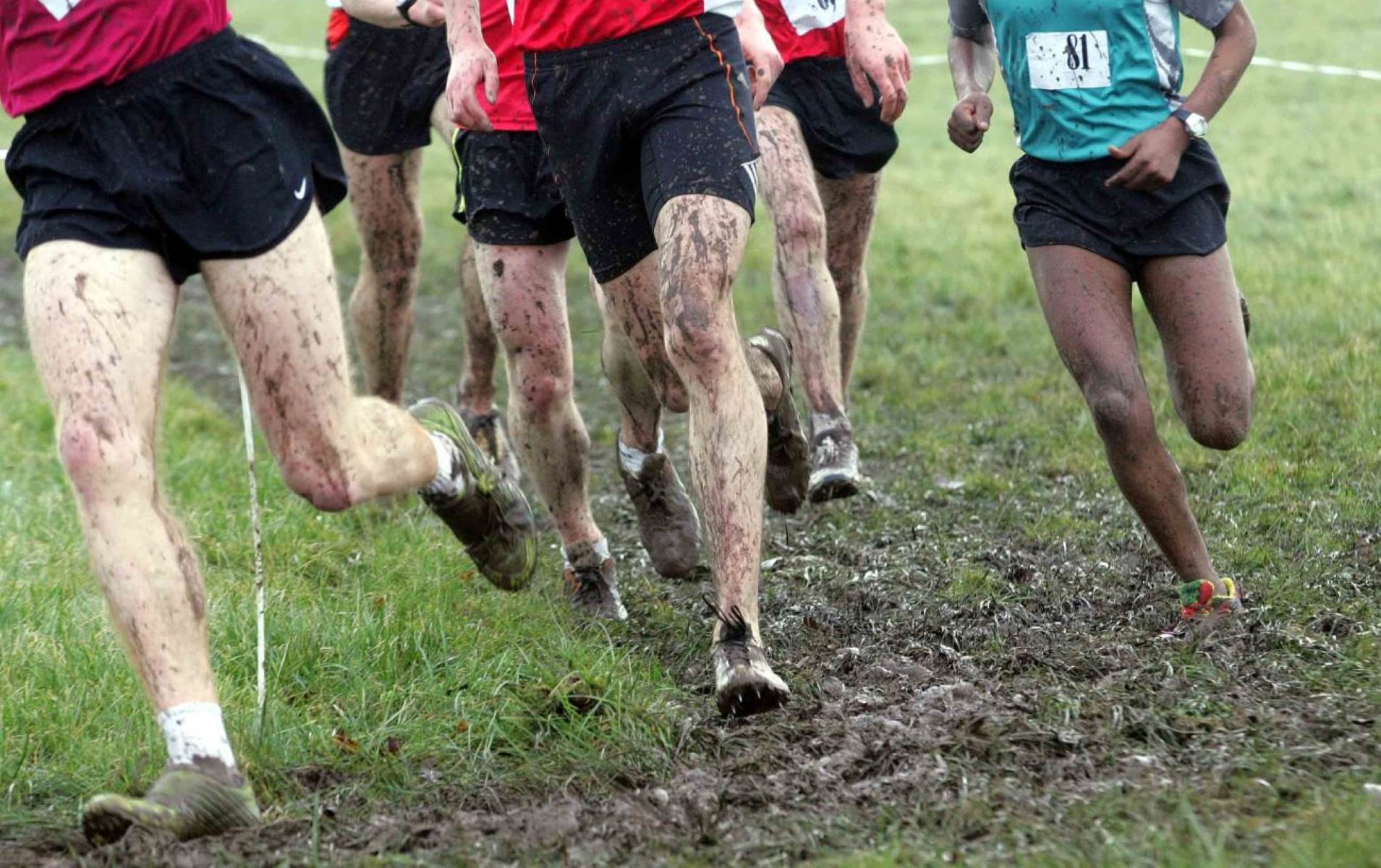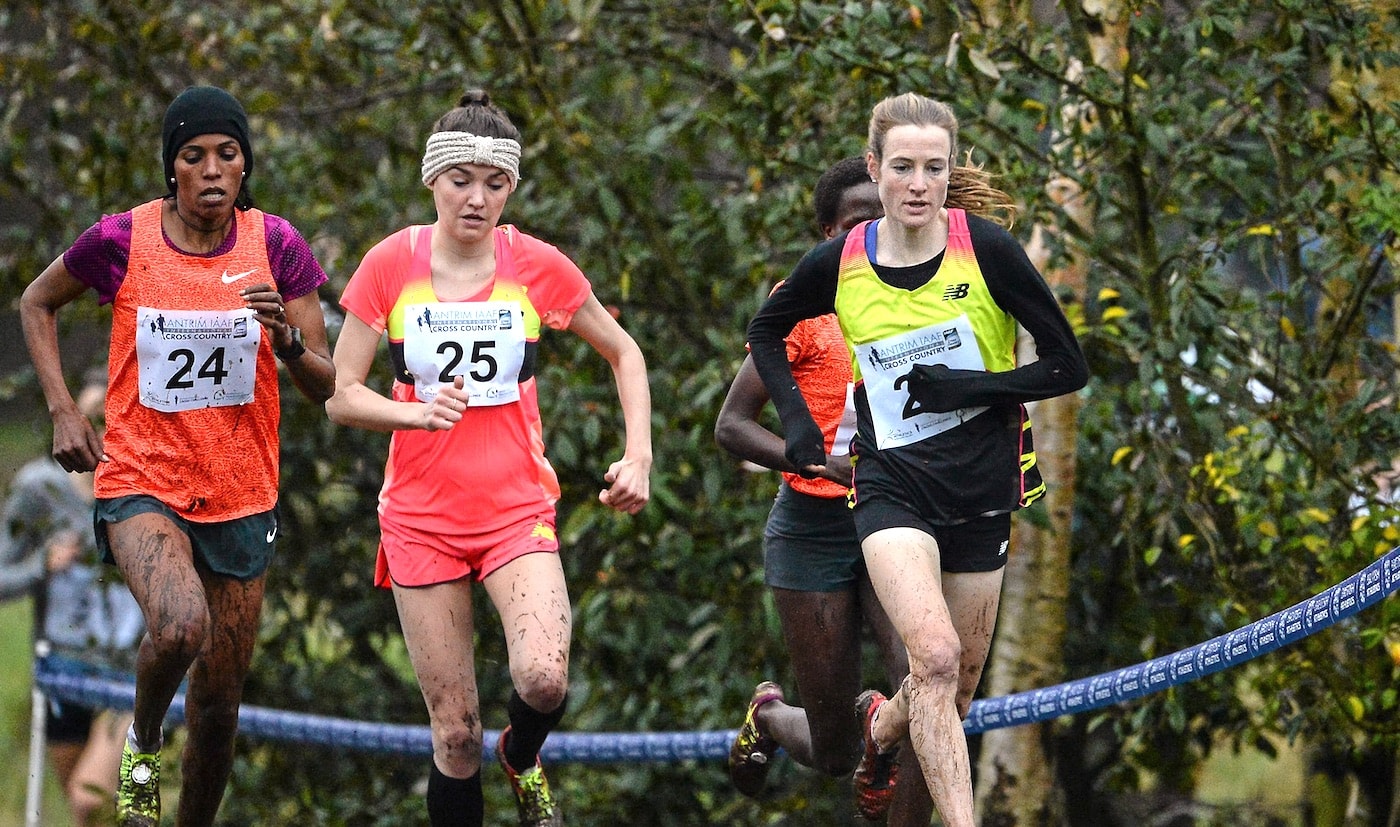Home>Misc>Featured>How To Breathe While Running A Cross Country


Featured
How To Breathe While Running A Cross Country
Modified: January 2, 2024
Learn how to breath properly while running cross country and improve your performance. Featured tips and techniques to help you run with ease and endurance.
Introduction
Welcome to the world of cross country running! As a beginner, you may be wondering why breathing is such a crucial aspect of this sport. Well, let me tell you – proper breathing technique can make a world of difference in your performance and overall experience while running.
Whether you are new to cross country running or an experienced athlete, understanding and implementing the right breathing techniques can help you run more efficiently, improve your stamina, and prevent fatigue. In this article, we will delve into the importance of breathing in running and provide you with valuable tips to enhance your breathing technique.
Running cross country involves covering long distances on a variety of terrains – from rugged trails to open fields. It requires not only physical endurance but also mental focus and control. Your breathing is a vital part of this equation, as it supplies the necessary oxygen to your muscles and helps maintain a steady rhythm.
Before we dive into the specifics of proper breathing techniques, it’s essential to understand that breathing is a natural process. However, during intense exercise, your body requires more oxygen to keep up with the demand. Therefore, learning how to maximize your breathing efficiency will significantly impact your performance and enable you to push through those challenging moments during your cross country runs.
So, whether you’re gearing up for your first cross country race or looking to improve your current running abilities, let’s explore the fundamentals of proper breathing technique and how you can integrate it seamlessly into your running routine.
Importance of Breathing in Running
When it comes to running, breathing is more than just a method of survival – it plays a crucial role in optimizing your performance and keeping you on track during your cross country runs. Here’s a look at why proper breathing technique is so important in running:
1. Oxygen Supply: Breathing provides your body with the necessary oxygen to fuel your muscles. During exercise, your muscles require more oxygen to produce energy. By maintaining proper breathing technique, you ensure an adequate supply of oxygen, preventing muscle fatigue and allowing you to run longer and with more efficiency.
2. Rhythm and Endurance: Proper breathing helps establish a rhythm to your running, allowing you to maintain a consistent pace. It helps regulate your stride and prevents the feeling of breathlessness. This rhythmic breathing pattern also aids in improving your endurance, so you can sustain your effort over longer distances.
3. Mental Focus and Relaxation: Running long distances can be mentally challenging. Focusing on your breathing can help divert your attention away from fatigue and discomfort, allowing you to stay in the moment and maintain a relaxed mindset. Deep breaths can help relax your body and relieve any tension, enhancing your overall running experience.
4. Injury Prevention: When you maintain proper breathing technique, you engage the right muscles and prevent unnecessary tension in your body. This can help reduce the risk of injuries, such as strained muscles or cramps, allowing you to run with ease and confidence.
5. Efficiency and Performance: Efficient breathing translates to efficient running. When you master proper breathing techniques, you optimize your energy usage and minimize wasted effort. This results in better overall performance, as you can redirect your focus towards maintaining pace, improving form, and tackling challenging terrains.
As you can see, breathing is not just a physical function but an essential tool in running. By understanding and implementing the right breathing techniques, you can enhance your running abilities, improve your overall experience, and reach your full potential as a cross country runner.
The Basics of Proper Breathing Technique
Now that we understand the importance of breathing in running, let’s dive into the fundamentals of proper breathing technique. By incorporating these basics into your running routine, you can maximize your performance and make your cross country runs more enjoyable.
1. Nasal Breathing: One of the fundamental principles of proper breathing technique is to breathe through your nose. Nasal breathing allows you to filter and humidify the air before it reaches your lungs, reducing the likelihood of irritation or discomfort. It also helps regulate the amount of air intake, ensuring a balanced oxygen-carbon dioxide ratio.
2. Deep Diaphragmatic Breathing: Focusing on deep, diaphragmatic breathing is key. Instead of shallow breathing that only utilizes your chest, aim to breathe deeply into your belly. This technique expands your diaphragm, allowing for greater oxygen intake and increased lung capacity.
3. Rhythmic Breathing: Establishing a rhythm to your breathing can help synchronize your breathing pattern with your running pace. This can vary based on factors such as your speed and the intensity of your run, but a common approach is to inhale for two strides and exhale for two strides. Find a rhythm that works for you and try to maintain it throughout your run.
4. Relaxation Techniques: Incorporating relaxation techniques into your breathing can further enhance your running experience. For instance, on a long uphill climb, take deeper breaths to provide your muscles with extra oxygen. On the other hand, during a downhill section or a recovery period, focus on slow, controlled exhales to release any tension and relax your body.
5. Posture and Alignment: Your breathing technique is closely linked to your posture and alignment. Maintain an upright position, with your shoulders relaxed and your core engaged. This open posture allows for better lung expansion and helps you breathe more effectively during your runs.
Remember, mastering proper breathing technique takes practice. Start by consciously focusing on your breath during your runs and gradually incorporate these basics into your routine. Over time, it will become second nature, allowing you to run with ease and efficiency.
Preparing for Your Run
Before you hit the trails for your cross country run, it’s important to prepare yourself physically and mentally. Proper preparation can greatly contribute to optimizing your breathing technique and overall running experience. Here are some tips to help you get ready:
1. Warm-up: Prior to starting your run, dedicate some time to warm up your body. Engage in dynamic stretching exercises to loosen up your muscles and increase blood flow. This prepares your body for the demands of running and helps prevent injuries. It also primes your respiratory system, making it easier to breathe correctly during your run.
2. Hydrate: Hydration plays a significant role in your performance and breathing efficiency. Ensure you are properly hydrated before heading out for your run. Drink water or other suitable fluids leading up to your run and continue hydrating during and after your workout. Staying hydrated helps maintain the elasticity of your lungs and prevents dryness that can lead to discomfort while breathing.
3. Dress Appropriately: Choose running attire that allows for ease of movement and promotes breathability. Opt for moisture-wicking fabrics that help keep you cool and dry during your run. Dressing in layers is a good idea, as it allows you to adjust your clothing based on changes in temperature and your body’s needs.
4. Set Realistic Goals: Establishing goals for your run can help keep you motivated and focused. However, it is important to set realistic goals that align with your current fitness level and abilities. Pushing yourself too hard can lead to increased breathlessness and discomfort. Gradually increase your distance and pace over time as your fitness improves.
5. Mental Preparation: Cross country running requires mental fortitude. Before you start your run, take a few moments to mentally prepare yourself. Visualize yourself running smoothly, breathing deeply, and enjoying the process. Cultivate a positive mindset that will carry you through any challenges you may face on your run.
By taking these preparatory steps, you can ensure a smoother and more enjoyable cross country running experience. Remember, preparation is key to not only optimizing your breathing technique but also setting yourself up for a successful and fulfilling run.
Breathing Techniques while Running
Now that you’re ready to embark on your cross country run, let’s explore some specific breathing techniques that you can employ to optimize your performance. These techniques will help you maintain a steady rhythm, increase your endurance, and make your runs more enjoyable:
1. Belly Breathing: As you start running, focus on taking deep breaths into your belly rather than shallow chest breaths. This allows for maximum oxygen intake and helps keep your breathing efficient. Imagine filling your abdomen with air as you inhale and gently exhaling as you release the breath.
2. Diaphragmatic Breathing: Engaging your diaphragm is key to efficient breathing while running. To practice this, place a hand on your belly, just below your ribcage. As you inhale, push your hand out with your belly, indicating deep diaphragmatic breathing. This expansion provides greater space for your lungs to fill with oxygen.
3. Exhale on the Exertion: Aim to exhale when your body is exerting the most effort, such as during the push-off phase of your stride or uphill climbs. This timing helps release tension from your body and allows you to expel carbon dioxide more effectively. Try to let your exhale be slightly longer than your inhale, which can help relax your body and maintain a steady rhythm.
4. Find Your Rhythm: Experiment with different breathing rhythms to find one that suits your running pace and comfort level. For example, you can try a 2:2 rhythm, where you take two steps while inhaling and two steps while exhaling. Adjust the rhythm as needed based on the intensity of your run or terrain.
5. Alternate Nostril Breathing: This breathing technique can help balance your energy and improve focus during your run. Close one nostril with your finger, take a deep breath in through the opposite nostril, then switch and exhale through the other nostril. Repeat this cycle, alternating nostrils with each inhale and exhale.
6. Relax and Release Tension: As you run, be mindful of any tension in your body, particularly in your shoulders, neck, and jaw. Relax these areas and with each exhale, imagine releasing any tightness or stress. A relaxed body allows for better lung expansion and smoother, more efficient breathing.
Remember, it may take some time and practice to incorporate these breathing techniques smoothly into your runs. Listen to your body and find what works best for you. Once you find your rhythm, these techniques will become second nature, enhancing your running performance and making your cross country runs more enjoyable.
Common Mistakes to Avoid
While we’ve covered the basics of proper breathing technique and specific techniques to enhance your running experience, it’s equally important to be aware of common mistakes that can hinder your progress. By avoiding these pitfalls, you can ensure that your breathing is optimized and contributes positively to your cross country runs. Here are some common mistakes to watch out for:
1. Shallow Breath: One of the most common mistakes is shallow breathing, where you only use the upper chest to breathe. This limits the amount of oxygen intake and can lead to feelings of breathlessness and fatigue. Instead, focus on deep, diaphragmatic breathing to maximize oxygen supply and muscle efficiency.
2. Holding Your Breath: Some runners have a tendency to hold their breath, especially during challenging portions of the run or when concentrating intensely. This deprives your body of the oxygen it needs and can lead to increased fatigue and muscle tension. Remember to consciously breathe and maintain a steady flow of oxygen throughout your run.
3. Over-Panting: Breathing heavily is natural during intense exercise, but be careful not to over-pant. Rapid, shallow breaths can disrupt your running rhythm and lead to hyperventilation. Focus on deep breaths and regulate the pace of your breathing to maintain a controlled and efficient flow of air.
4. Holding Tension in the Upper Body: Tension in your upper body, especially in your shoulders, neck, and arms, can hinder your breathing. It restricts proper lung expansion and can lead to shallow breathing. Stay mindful of your body during your runs and consciously relax your upper body to allow for smooth and efficient breathing.
5. Ignoring Your Breathing Technique: It’s easy to get caught up in the physical aspects of running and neglect paying attention to your breathing technique. However, overlooking proper breathing can significantly impact your performance. Make a conscious effort to incorporate the breathing basics and techniques we discussed earlier and prioritize maintaining a steady, rhythmic flow of breath.
6. Being Unaware of Environmental Factors: It’s important to consider external factors that can affect your breathing, such as air quality, humidity, and altitude. Running in polluted or overly dry environments can make it harder to breathe. Be mindful of these factors and adjust your running routes or intensity accordingly to ensure a more comfortable breathing experience.
Avoiding these common mistakes will help you maintain proper breathing technique, optimize your oxygen intake, and improve your overall running performance. By staying aware of your breathing pattern and making necessary adjustments, you can enjoy smoother runs and make the most of your cross country adventures.
Benefits of Proper Breathing in Cross Country Running
Proper breathing technique is not only essential for optimizing your running performance, but it also offers a range of benefits that can positively impact your cross country running experience. Let’s explore some of the key advantages of implementing proper breathing techniques:
1. Increased Endurance: When you breathe efficiently, delivering a steady flow of oxygen to your muscles, you enhance your endurance. This allows you to sustain your effort over longer distances without quickly succumbing to fatigue. With improved endurance, you can push your limits and achieve new personal bests in your cross country runs.
2. Enhanced Focus and Mental Clarity: Proper breathing technique helps improve your mental well-being during your runs. Deep, rhythmic breathing can help calm your mind and provide a sense of focus and clarity. By centering your attention on your breath, you can stay present in the moment, overcome mental obstacles, and maintain a positive mindset throughout your run.
3. Improved Running Efficiency: When you breathe properly, your body performs at its best. Oxygen is delivered efficiently to your muscles, providing them with the fuel they need to propel you forward. By optimizing your oxygen intake and minimizing wasted effort, you can improve your running efficiency, allowing you to cover more ground with less energy expenditure.
4. Reduced Risk of Muscular Fatigue: Insufficient oxygen supply to your muscles can lead to premature fatigue and decreased performance. By focusing on proper breathing techniques, you ensure that your muscles receive an adequate supply of oxygen, reducing the likelihood of early exhaustion. This allows you to extend your running sessions and maintain a consistent pace throughout.
5. Stress Reduction and Improved Well-being: Cross country running is not just a physical activity but also an opportunity for self-care and stress relief. Proper breathing technique helps activate the body’s relaxation response, reducing stress and promoting a sense of well-being. The deep breaths taken during your runs can help release tension and promote a positive mental state.
6. Better Recovery: Oxygen is essential for the recovery and repair processes in your body. By focusing on proper breathing post-run, you increase the oxygen supply to your muscles, aiding in their recovery and reducing the likelihood of post-run soreness or injuries. Enhancing your breathing technique post-run ensures a quicker and more effective recovery period.
By incorporating proper breathing techniques into your cross country running routine, you can unlock these benefits and elevate your overall performance. Mastering the art of efficient breathing will not only enhance your physical abilities but also contribute to a more enjoyable and fulfilling running experience.
Conclusion
Cross country running is a demanding sport that requires physical endurance, mental focus, and a solid understanding of proper breathing techniques. By mastering the art of efficient breathing, you can enhance your performance, increase your endurance, and make your runs more enjoyable. Remember these key points as you embark on your cross country running journey:
First and foremost, prioritize deep diaphragmatic breathing and focus on filling your belly with each breath. This maximizes your oxygen intake and helps to fuel your muscles efficiently.
Establish a rhythmic breathing pattern that suits your pacing and running intensity. Experiment and find the rhythm that feels most natural and allows you to maintain a steady flow of breath throughout your run.
Pay attention to relaxation techniques, consciously releasing tension in your upper body and promoting a relaxed and open posture. This helps to optimize lung expansion and allows for smoother and more efficient breathing.
Furthermore, be mindful of common mistakes such as shallow breathing, breath holding, and over-panting, and take steps to avoid them. Being aware of these pitfalls will help you maintain proper breathing technique and avoid unnecessary fatigue or discomfort during your runs.
Lastly, remember that proper breathing technique offers numerous benefits, including increased endurance, improved mental focus, enhanced running efficiency, decreased risk of muscular fatigue, stress reduction, and better recovery. By incorporating these techniques into your cross country running routine, you can unlock your full potential and enjoy the many rewards that this captivating sport has to offer.
So take a deep breath, lace up your running shoes, and embrace the exhilarating world of cross country running with confidence. With proper breathing technique as your ally, the trails await you, ready to be conquered one stride at a time.









